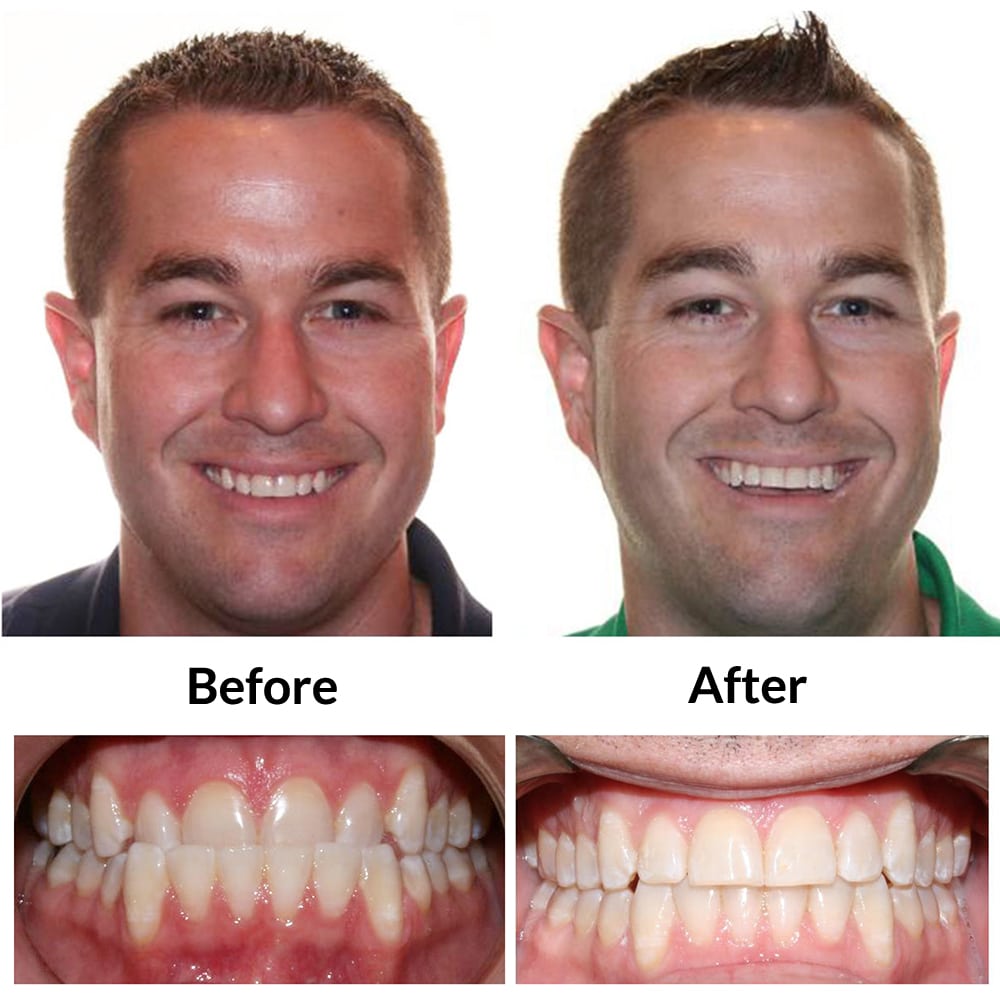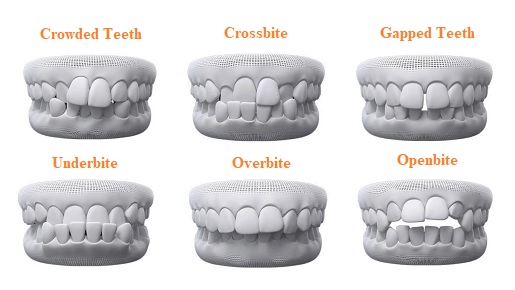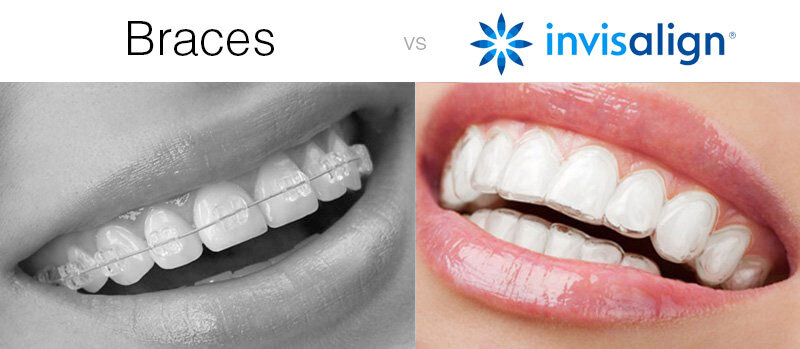Discover the Perks of Invisalign for a Perfect Smile Transformation
Discover the Perks of Invisalign for a Perfect Smile Transformation
Blog Article
Invisalign vs. Typical Braces: Which Option Is Right for You?
When thinking about orthodontic therapy, the selection in between Invisalign and conventional braces presents a number of essential elements that warrant cautious examination. Invisalign supplies a discreet choice with detachable aligners, while typical braces provide a much more noticeable yet effective remedy for severe misalignment. Each alternative incorporates unique benefits and drawbacks connected to aesthetics, convenience, therapy period, and price. Recognizing these nuances is crucial for making an educated decision that straightens with your individual choices and lifestyle. The question continues to be: which choice will ideal fulfill your orthodontic needs and expectations?
Summary of Treatment Options

On the other hand, conventional dental braces are composed of steel brackets and cords that are bonded to the teeth. This technique uses continuous pressure with time to attain alignment. While reliable for complicated orthodontic problems, typical dental braces require normal brows through for modifications and can pose difficulties in maintaining dental hygiene because of the problem of cleaning up about cords and braces.
Both options have their values, and the option typically hinges on certain oral conditions, way of life choices, and person compliance. Ultimately, seeking advice from an orthodontic specialist is crucial for figuring out one of the most ideal treatment strategy customized to specific requirements. Understanding the nuances of each choice can substantially influence the total success of orthodontic therapy.
Visual Factors To Consider
A substantial variable influencing the selection in between Invisalign and standard braces is the aesthetic appeal each therapy provides. Invisalign aligners are crafted from clear plastic, making them practically unseen when worn.
On the other hand, standard braces contain metal braces and wires, which can be extra recognizable. While advancements in orthodontic innovation have actually resulted in the growth of smaller sized brackets and tinted elastics, standard braces still preserve an even more conspicuous account. For some people, the visibility of braces might hinder them from looking for required treatment.
Inevitably, the selection between Invisalign and conventional braces may pivot on individual choices concerning looks. Clients that focus on discernment frequently lean toward Invisalign, while those that are less worried about visibility may select traditional braces. Understanding the visual ramifications of each choice is crucial for making a notified decision that aligns with one's way of living and preferences.
Convenience and Convenience

In regards to convenience, Invisalign aligners are detachable, enabling individuals to appreciate their favorite foods without restriction and keep ideal dental hygiene. Brushing and flossing are simplified, as the aligners can be taken out throughout these regimens, whereas conventional braces call for mindful steering around braces and cords.
In contrast, conventional braces demand normal modifications, making them less convenient for those with hectic timetables. In general, the convenience and comfort of Invisalign make it an attractive option for several people looking for orthodontic treatment.
Treatment Duration and Performance
While both Invisalign and standard dental braces are efficient in remedying oral imbalances, the period of therapy can differ substantially in between her comment is here both options. Normally, Invisalign treatment can take anywhere from 12 to 18 months, depending upon the intricacy of the situation. The clear aligners work by gradually shifting teeth into their desired positions, and normal follow-ups with an orthodontist help make certain development continues to be on the right track.
On the other hand, standard braces typically call for a longer dedication, generally varying from 18 months to three years. This is Bonuses because of their set nature and making use of wires and braces, which can be extra effective for intricate instances and serious misalignments (Invisalign). The therapy performance of traditional braces is well-documented, as they permit for accurate changes and better control over tooth movement
Inevitably, the option between Invisalign and conventional braces might rest on both the anticipated therapy duration and the certain oral issues at hand. Consulting with an orthodontist is critical, as they can supply tailored suggestions based on specific demands, making certain the chosen technique lines up with desired outcomes and timeframes.
Cost Contrast and Insurance Policy Choices
Price plays a considerable function in the decision-making procedure for people thinking about orthodontic therapy, whether opting for Invisalign or conventional dental braces. Usually, the price of Invisalign varieties from $3,000 to $8,000, while standard dental braces generally cost in between $2,000 and $6,000. Aspects influencing these expenses consist of the intricacy of the situation, the duration of therapy, and geographical location.
Insurance protection can considerably influence out-of-pocket expenses. Many dental insurance coverage strategies provide partial insurance coverage for orthodontic treatments, but the specifics can differ extensively. It is essential for people to evaluate their insurance plan to determine the extent of protection for either option. Normally, traditional dental braces may be extra frequently covered by insurance coverage strategies contrasted to Invisalign, which some insurance providers classify as an aesthetic procedure.
In addition, numerous orthodontic practices offer flexible layaway plan, making both treatment options a lot more available. People ought to ask about prospective funding choices and discount rates for upfront payments. Evaluating the complete cost, consisting of insurance coverage advantages and layaway plan, is vital for making a notified decision that straightens with both aesthetic choices and budget factors to consider.

Final Thought
In recap, the selection in between Invisalign and standard braces pivots on numerous article elements, consisting of visual preferences, convenience, therapy duration, and cost. Invisalign provides a discreet, removable choice that facilitates oral hygiene and nutritional adaptability, while conventional braces might be preferable for intricate oral issues and commonly come with a reduced rate point. Inevitably, consultation with an orthodontist is important to evaluate private scenarios and identify the most suitable therapy alternative for attaining ideal oral alignment.
When considering orthodontic therapy, the selection between Invisalign and conventional dental braces offers numerous important variables that merit careful evaluation.Contrasting Invisalign and traditional braces discloses distinct therapy options for orthodontic modification.While both Invisalign and traditional braces are effective in remedying oral misalignments, the period of treatment can differ dramatically between the 2 choices.Expense plays a significant duty in the decision-making process for individuals taking into consideration orthodontic treatment, whether choosing for Invisalign or standard dental braces.In summary, the choice between Invisalign and conventional braces pivots on numerous factors, including visual preferences, comfort, therapy duration, and cost.
Report this page